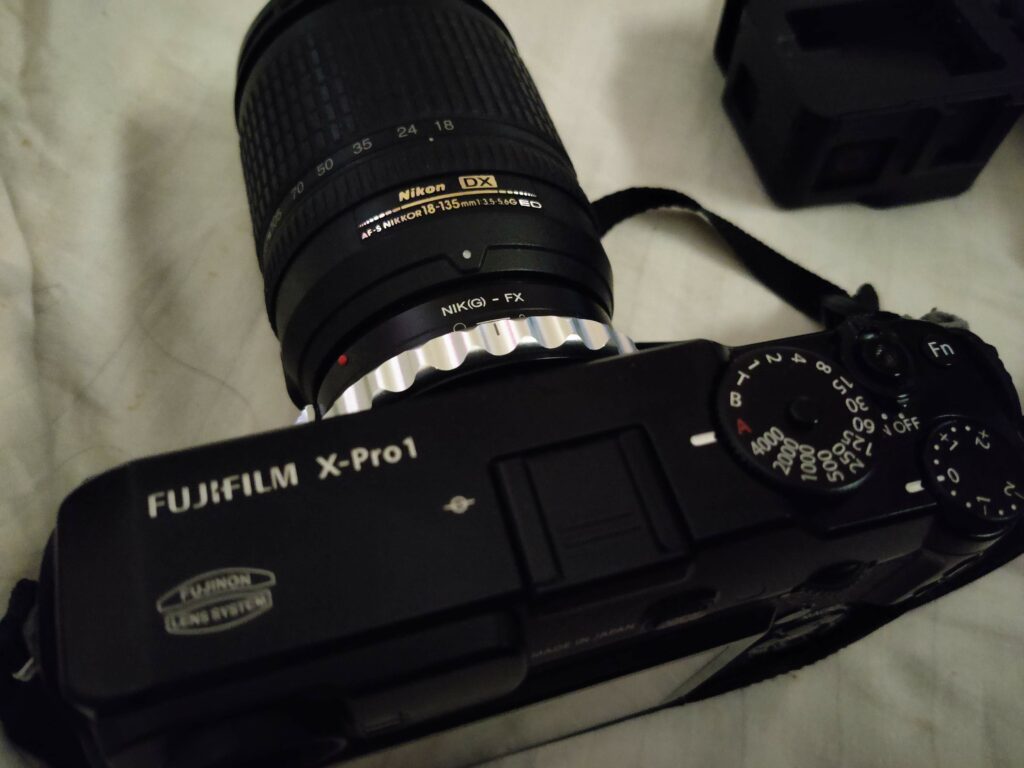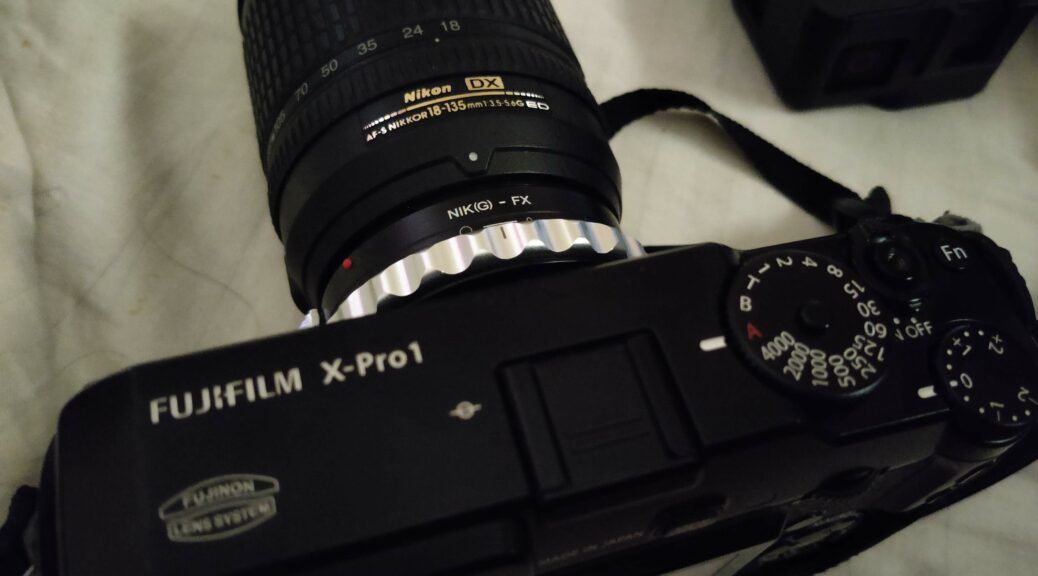So my trusted old DSLR, a Nikon D80 that I had been using since 2008 finally gave up the ghost sometime last year. I had a decent set of lenses for it. I particularly liked my 18-135mm zoom that was very versatile for travel. But I wasn’t quite sure I wanted to invest in a new Nikon body.

One big reason was that I also got a Fujifilm X-Pro1 for a very good price during our 2015 Japan trip. It was one of the few cameras that were made in Japan and buying it in Japan meant you could avoid the various duties and fees you would incur elsewhere. I even got a refund of the Japanese VAT. Sadly though it came with a 35mm prime. An excellent f1. 4 lens, but an effective 52mm focal length made it pretty limited as a travel lens.
So now I was in a dilemma. Should I get a new Fuji zoom lens or a Nikon body? Both are kind of expensive and around the same price. Was there a way around it?
I had heard of lens adapters long ago but never really looked into them. Did a bit of research now and it looked promising. The Fuji X bodies were excellent candidates for adapters and could use lenses of pretty much any mount type with decent results. Something to do with the flange distance of a mirrorless camera. And a Nikon F mount to Fuji X mount adapter would cost less than 1/10th the cost of either a lens or a body.
With some travel possibilities in the near future where limited carrying capacity would restrict me to just one lens and body, I decided to give it a try. What you see in the picture here are my Nikon 18-135mm and Fujifilm X-Pro1 held together by a K&F Concept adapter.

The catch? It’s manual focus only. Something that’s not always very easy on the X-Pro1’s EVF. You need to take your time with each shot. Or get comfortable with zone focusing. Surely not all the photos will be keepers. But the experience kind of takes you back to the old days of photography with manual cameras.
Exposure? It works fine. You set the aperture on the lens, similar to how you would with an actual Fuji lens. But unlike a Fuji lens, the camera doesn’t know of exactly what aperture you set as there is no electronic communication between the body and the adapted lens. But it still senses the light coming in through your set aperture correctly, so light metering and auto-exposure work fine. You also may not be able to select precise apertures as the adapter gives you a range between maximum and minimum for any attached lens and divides this range into some equally spaced notches.
But if you’re an EXIF peeper, you’re out of luck All your photos will show F0 for aperture and there will be no information on what lens you used. Needless to say, if you used a zoom, there is no way tell at exactly what focal length you took the shot. But that’s how it was back in the film days, wasn’t it? Old school! The best you could do is take notes. But even then you would have to guesstimate the aperture unless you go wide open or fully stopped-down.
So is it a worthwhile compromise? During my recent motorcycle trip to northern Karnataka and Goa, I got to use this setup with my X-Pro1 and Nikkor 18-135mm quite a bit. As expected, not all the photos were keepers due to missed focus, but an appreciable number turned out to be quite satisfactory.
I had to spend considerably more time with each shot, trying to nail the focus. I did not really mind this time, but depending on what and where you shoot, this can get in the way. My X-Pro1’s less than ideal EVF resolution also doesn’t really help, even with focus-peaking. The EVF on newer Fujifilm cameras have improved considerably and should be of significant help in that regard.


I think the biggest gripe I had was that I couldn’t really tell if I got the focus right until I got to my hotel and checked the photos on my laptop screen. Slightly off-focus photos would not be noticeable when viewed on the camera screen. Old school again!
So is it a suitable replacement for a proper body and lens combo that are fully compatible with each other and let you autofocus? No! But is it a worthwhile compromise? Maybe! If you’re in a situation like mine and are willing to put in a little more effort, this can save you a good amount of money. It can also give you some time to decide on which brand ecosystem or umbrella to go with later. For now you don’t have to sell your existing lenses or body to get the one you’re missing.





